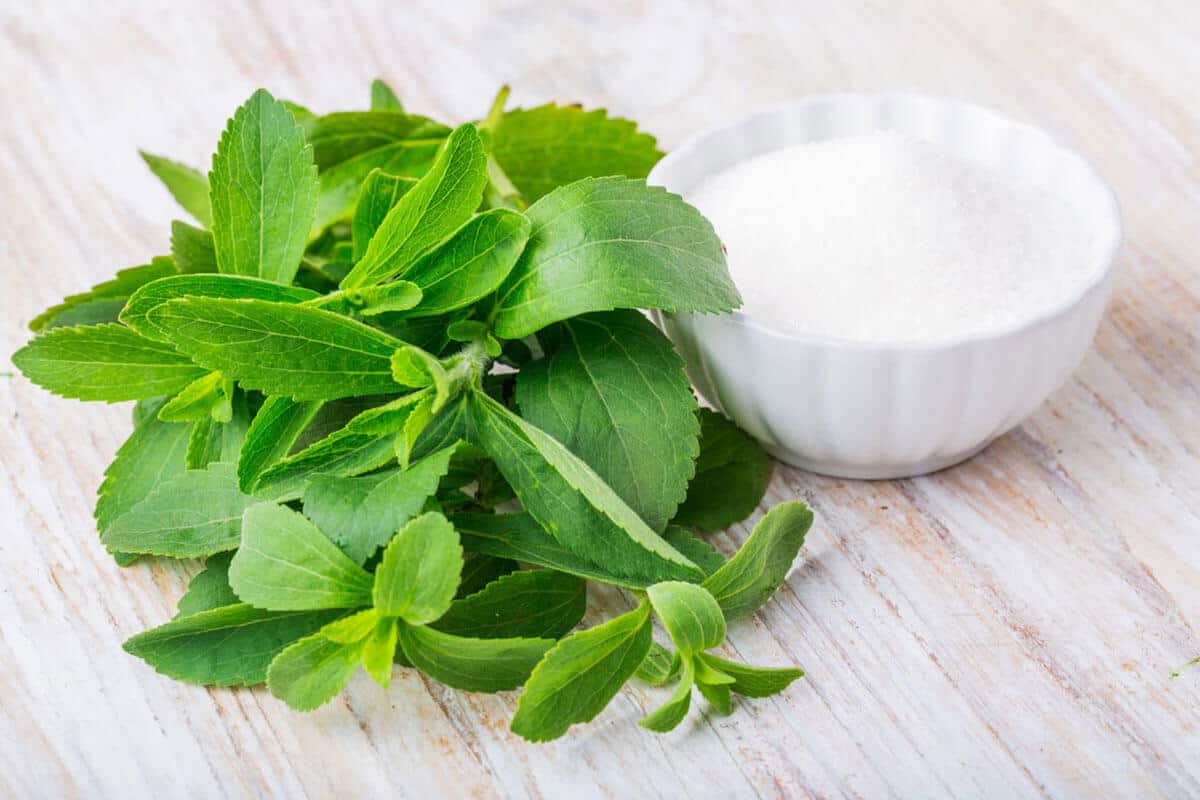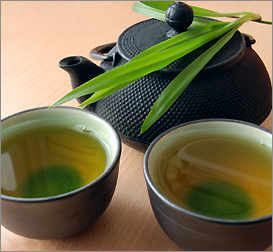Sweet Tooth? What you need to know about Sugar and Sweeteners
(Fullscript – K. Zaremba, CNP)
The negative health effects of sugar, including weight gain and obesity, have been well-established. (12) Leading organizations, such as the World Health Organization and Centers for Disease Control and Prevention, recommend limiting dietary intake of added sugars to less than 10% of daily calories. (4)(20)
Unfortunately, sugar is still prevalent in our food system and recent surveys report that it is widely consumed. In the United States, the average percentage of daily calories consumed from added sugar was approximately 16% for children in 2005 to 2008 and 13% for adults in 2005 to 2010. (4) Sugar consumption is similar in Canada, where added sugars accounted for approximately 11% of total calories in all Canadians in 2004. (3)
Learn about the different types of sugars and sweeteners, natural alternatives, as well as the health effects of sugar and sweeteners below.
What is sugar?
Sugar is a group of simple carbohydrates that includes monosaccharides, such as fructose and glucose, and disaccharides, such as sucrose and lactose. (7)(12) Sugar occurs naturally in certain foods, including fruit, milk, and vegetables. (12) Sugar ingredients, such as brown or white sugar, are typically manufactured from food sources including beets and sugar cane. (3)
Total sugars versus added sugars
“Total sugars” include any sugars present in a food that are naturally occurring or added. (3) For example, the total sugars found in a strawberry jam will include the amount of sugar naturally provided by the fruit, plus the amount of added sugar from sucrose used to make the product.
“Added sugars” are all sugars that have been added to foods or beverages during processing and preparation for taste or preservation. (12) There are many different names for added sugars, which will be listed on food packaging in the ingredient list.
Examples of added sugars include:
- Brown sugar
- Corn syrup
- Dextrose
- Fructose
- Glucose
- High-fructose corn syrup (HFCS)
- Honey
- Lactose
- Malt syrup
- Molasses
- Raw sugar
- Sucrose (table sugar)
- Turbinado sugar (18)
What is the difference between sugar and sweeteners?
Sugars are ingredients that obtain their sweetness from carbohydrate components, thus providing a source of calories. (14) Sweeteners are sugar substitutes that have a similar taste to sugar but are generally lower in calories (10)(15) or may be used in small quantities due to their intense sweetness, which can result in a lower intake of calories. (8)
Added sugars may be hiding in prepared foods such as salad dressings, sauces, and soups.
Different types of sugar and sweeteners
The various forms of sugars and sweeteners, including natural and refined sugars, artificial sweeteners, sugar alcohols, and natural sweeteners, are explored in detail below.
Natural sugar
Natural sugar refers to sugar naturally present in food or beverages, such as fruit, fruit juice, honey, milk, and natural syrups. (1)(12) These sugars are generally not processed or refined and may have a different effect on health as they are present in a whole food. For example, fructose is a sugar naturally-occurring in fruits, which also typically provide anti-oxidants, fiber, potassium, and vitamin C. The proportion of fructose in a whole fruit will be lower than the proportion of fructose in HFCS, a refined sugar. (7)
Refined sugar
Refined sugar is produced from food, commonly sugar cane or sugar beets. (3) The raw ingredient is processed through multiple steps, including washing, boiling, filtering, evaporating, centrifuging (spinning to remove liquid from the sugar crystals), drying, and packaging. (16)
Examples of refined sugar include crystallized forms such as brown or white sugar, specialty forms such as powdered sugar, and syrups such as corn syrup or HFCS. (3) Refined sugars are commonly added to packaged foods and beverages by the manufacturer or to meals prepared at restaurants, and are also available as an ingredient in stores. (12)
Sugar alcohol
A group of ingredients called sugar alcohols, also known as polyols, are sweeteners and food additives that are chemically similar to sugar, but contain fewer calories per gram and are considered to be less sweet. While sugar alcohols are naturally found in certain foods, including apples, berries, and plums, they are often manufactured from refined sugars for larger-scale production and sale. (9)
The U.S. Food and Drug Administration (FDA) or Health Canada (HC) must approve a sugar alcohol before it can be sold or used as a food additive. (10) Examples of sugar alcohols include:
- Erythritol
- Hydrogenated starch hydrolysates
- Isomalt
- Lactitol
- Maltitol
- Maltitol syrup
- Mannitol
- Sorbitol
- Sorbitol syrup
- Xylitol (9)(19)
Sugar alcohols are used in various foods and products, such as chewing gum, cookies, and sugar-free candy. (19)
Artificial sweeteners
Artificial sweeteners are food additives commonly used as a sweetener or flavor enhancer, and because their cost may be less expensive than sugar in some cases. Similarly to sugar alcohols, artificial sweeteners must be approved by the FDA or HC before they can be used. (10)(15)
There are several artificial sweeteners that have been approved for use in both the US and Canada, including:
Artificial sweeteners are commonly found in food and beverages marketed as “diet” or “sugar-free”, such as baked goods, candy, canned goods, jam and jelly, soda, and puddings. (19)
Alternatives to sugar and artificial sweeteners: natural sweeteners
Natural sweeteners are plant-derived ingredients that provide an intensely sweet taste but generally obtain their sweetness from non-carbohydrate components, such as proteins, steroidal saponins, and terpenoids. (14) Examples of natural sweeteners include stevia, which comes from the plant Stevia rebaudiana, and Luo Han Guo (monk fruit) extract, derived from Siraitia grosvenorii fruit. (15)(19)
Stevia is a natural sweetener made from Stevia rebaudiana, a plant native to Paraguay. (15)
Health effects of sugar and sweeteners
Various sugars and sweeteners are metabolized differently by the body, leading to different health effects.
How is sugar metabolized?
Sugar is digested into the monosaccharides galactose, glucose, and fructose, and absorbed in the small intestine. (17) Added sugars, such as sucrose and HFCS contain both glucose and fructose. (7) Glucose is used as a source of quick energy in muscles, fatty tissue, and other tissues throughout the body. Conversely, fructose is stored in the liver, where it may be converted into various substances, including glucose and fatty acids, then released to be circulated in the bloodstream. (7)
What are the health effects of sugar?
Due to its highly palatable taste and the calories it provides, sugar triggers the reward system of the brain, affecting communication that signals satiety (fullness). (7) Fructose intake specifically may lead to the overconsumption of calories, as it has been found to reduce the suppression of ghrelin, a hormone that suppresses appetite. Comparatively, while glucose consumption will increase levels of blood glucose and insulin, it does not have the same effect on ghrelin. (7)
Fructose intake from added sugars has been associated with health conditions including diabetes, hypertension, insulin resistance, and metabolic syndrome. When consumed in large amounts, fructose may increase the production of fat in the liver, as well as the production of advanced glycation end products (AGEs), compounds that are associated with neurodegenerative diseases and inflammatory conditions, such as asthma. (7)
Whether derived from a whole food source or a concentrated source, sugars, and sugar alcohols may cause adverse effects in individuals with food intolerances, or aggravate symptoms of functional gastrointestinal disorders such as irritable bowel syndrome (IBS). (17) For example, individuals with a lactase enzyme deficiency may experience malabsorption and digestive symptoms when they consume lactose, a sugar found in milk. (2)
Overall, consuming a high amount of carbohydrates, particularly from added sugars, may be associated with conditions such as cardiovascular disease, diabetes, metabolic syndrome, overweight, and obesity. (8) In order to reduce the risk of unhealthy weight gain, added sugar consumption should be limited to less than 10% of total calories per day. There may be additional health benefits to limiting sugar consumption further, such as a reduced risk of dental cavities. (20)
How are artificial sweeteners metabolized?
The metabolism of artificial sweeteners varies depending on the ingredient. In the digestive tract, aspartame is broken down into smaller components, including aspartic acid, methanol, and phenylalanine, which are absorbed or further metabolized. On the other hand, Ace-K and sucralose are not metabolized by the body, and the majority of what is consumed will be excreted in the feces. (5) Small amounts may be absorbed, and then are excreted by the kidneys. (13)
Manufactured sugar alcohols, such as erythritol and other polyols, are carbohydrates that are poorly digested and absorbed in the small intestine. When consumed in large quantities, they may increase water content in the gut, resulting in a laxative effect, and potentially other adverse gastrointestinal effects. (5)
What are the health effects of artificial sweeteners?
There is conflicting evidence regarding the safety of artificial sweeteners. Some studies have shown that these ingredients may have various adverse effects, including weight gain and obesity in humans, as well as an increased risk of certain cancers in animal trials. Researchers suggest that further large-scale studies are needed to establish the effects of artificial sweeteners in the general population. (15)
How are natural sweeteners metabolized?
Similar to artificial sweeteners, the metabolism of natural sweeteners varies by ingredient. The steviol glycosides found in stevia are not metabolized by the human body, which is why no calories are obtained from the sweetener. (5) Specific bacteria in the colon convert compounds found in stevia, which are then excreted in the urine. (13) Research suggests that while certain components of monk fruit are absorbed, monk fruit concentrate does not have an effect on blood glucose in humans. (6)
What are the health effects of natural sweeteners?
Natural sweeteners may provide certain health benefits. For example, clinical research has shown that stevia glycosides, components of stevia, may have anti-hyperglycemic (blood sugar-lowering) and anti-hypertensive (blood pressure-lowering) effects. (8)
Consume complex carbohydrates found in foods such as vegetables, fruits, legumes, and whole grains.
Reducing your sugar intake
Researchers and health authorities alike recommend reducing added sugars in the diet. (7)(8)(20) Foods that are high in added sugars are generally also low in nutrients. (7)
Added sugars are commonly found in foods and beverages including:
- Alcoholic beverages (3)
- Baked goods (e.g., bread, cake, cookies, pastries) (3)(4)
- Candy (4)
- Dairy (e.g., cheese, frozen yogurt, ice cream, yogurt) (3)(4)
- Jams (3)
- Meal replacements (3)
- Nuts and seeds (3)
- Salad dressings (3)
- Sauces (3)
- Soups (3)
- Sweetened beverages (e.g., energy drinks, juice, soda, tea) (4)
Be sure to read food labels to identify added sugars or sweeteners in the ingredient list, and check the sugar content on the nutrition facts label. You may find using an online macronutrient or sugar-tracking app helpful, as these wellness apps generally provide information on the sugar content in foods and allow you to track your daily sugar or carbohydrate intake.
Focus on foods that provide complex carbohydrates, including fruit, legumes, vegetables, and whole grains, all of which provide nutrients such as fiber, which may help limit the negative effects of sugar. (7) Finally, consider using natural sugars and sweeteners in place of refined sugar or artificial sweeteners.
The bottom line
Navigating the variety of sugars and sweeteners available can quickly become confusing. Overall, it’s best to limit your intake of added sugars and artificial sweeteners to maintain good health and reduce your risk of chronic diseases. When grocery shopping, remember to read labels to identify these ingredients in foods.
Is sugar your weakness? Do you want to decrease your intake, but can’t? If you’re looking for the roadmap to healthier eating, I can help you. Contact Dr. Linda L. Brown, ND at info@WoodbridgeNaturopath.com.
Leave a Reply
Are you ready to transform your health?
Download this free ebook and watch my introductory video. Then contact me for your initial appointment or a free consult to discuss your healthcare needs.


















